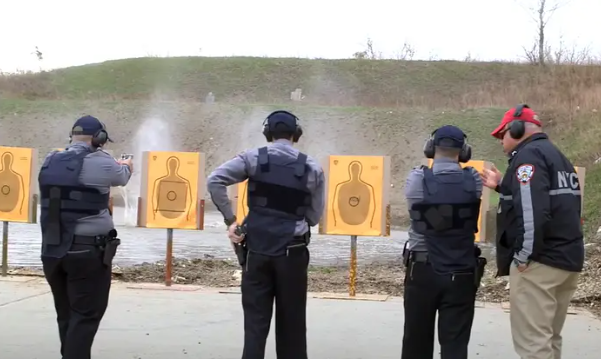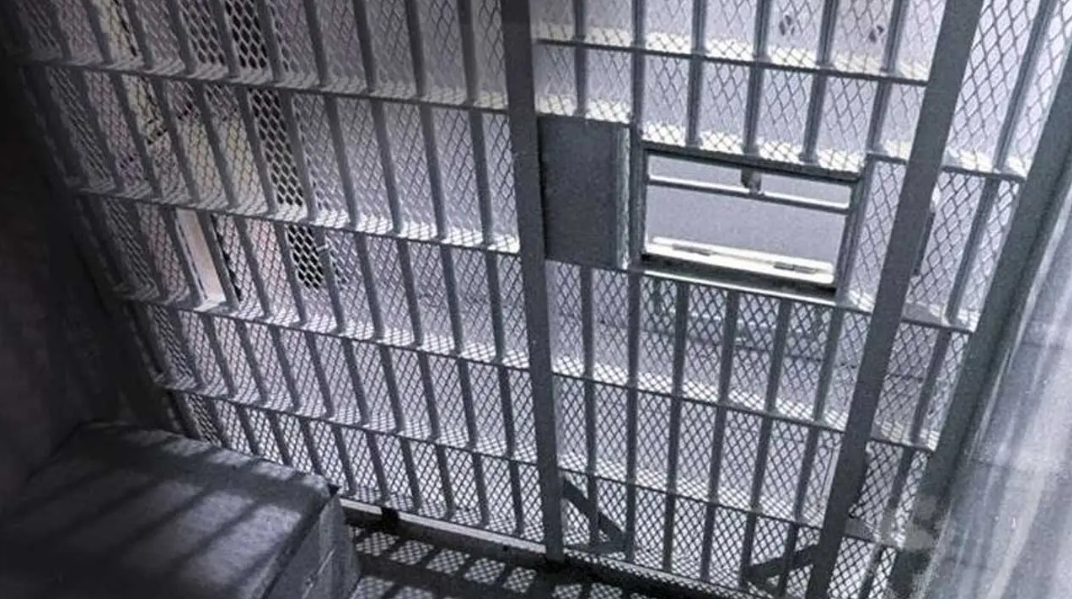We wanted to write an article on a topic that you might have thought that you never would read about in print. This article is going to discuss how and when to use deadly force in a correctional facility and most importantly how to defend your actions. Since most corrections officers are not trained or equipped with weapons designed to deliver deadly force the techniques we are going to discuss will need to be unconventional. The following information is the kind of stuff we talk about before roll call when we hear about an assault on an officer from the previous shift. This type of violent assault against a corrections officer could happen anywhere. It could even happen in your facility. These life threatening assaults could happen to a friend or someone who you went to the academy with or it could happen to you. Hopefully it’s doesn’t end up like the incident referenced below with an officer being killed.
Corrections Officer William Hesson dies at Cuyahoga County
Juvenile Correctional Facility after incident with youth
May 01, 2009 07:31AM
HIGHLAND HILLS: A 39-year-old corrections officer at the Cuyahoga County Juvenile Correctional Facility in Highland Hills died Wednesday after an incident with a youth, according to the Ohio Department of Youth Services. The Ohio State Highway Patrol is investigating, and was interviewing staff and youths at the facility on Friday. Hesson, of North Canton, who had worked at the facility only a few months, was rushed to a hospital and died soon after he arrived.
This article is going to be about the need for corrections officers to deliver deadly force to protect themselves and others from inmates who are trying to kill them. It is going to deal with unconventional means of delivering deadly force when justified – even though corrections officers are not usually trained or equipped with such weapons. This article is not about being giving officers a green light to use force indiscriminately but instead is meant to give officers the information and clear understanding of the when, where and how to use force capable of taking a life. This is not about feeling good about killing someone using unconventional means. There is nothing “good” about the taking of a life during a violent situation. It may become a necessity. Officers who have committed this ultimate seizure and have not been properly prepared and debriefed afterwards have often resigned from the profession because of the stress and turmoil it has caused. This extreme response to the danger of your very own death or great bodily harm will leave a lasting imprint on your own psyche. The taking of a life should not be entered into lightly but with great understanding and a sense of duty.
Corrections officers are assaulted and sometimes killed daily in correctional facilities all over the world. Yes, it is a fact that each year corrections officers are assaulted and killed by inmates in our care & custody… We have taken on a profession that places brother and sister officers inside a locked facility with the most violent individuals and asked to maintain safety and security unarmed and heavily scrutinized. There is an inherent danger associated with the correctional profession. Whether an officer is in a county jail or a closed security segregation facility, wearing a uniform will put them in dangerous situations. Threat assessment is the act of becoming aware of a situation directly through the senses, including hearing and seeing, thereby making a reasonable determination about the risks involved. Any inmate potentially can be assaultive and ultimately use deadly force against us. Therefore, approaching every inmate in a potential threat is both reasonable yet understandable.
Your goal should be to develop an “unbeatable attitude” that can be maintained throughout your entire career. We have heard officers say, “It could never happen to me like that.” While it is true that it may not, the simple facts support that it could. You must plan for the day when you may become involved in a life threatening encounter. This is the only way to be truly mentally prepared for involvement in a critical incident where you may have to take a life. You must believe that it will happen during your career. If you believe this, the question in your mind will be, “When is it going to happen?” With this type of mind-set, you have the advantage of reinforcing in your mind the fact at any time you may be faced with a life or death situation. By being continually conscious of this, you will be more alert, knowing that each inmate encounter could be the ultimate test of your training and experiences.
The proper survival mindset should be built with this axiom as its foundation: “I know it’s going to happen, I just don’t know when.” Of course, this is a violent confrontational situation during which you’ll have to use force to save your very life. We face verbal threats every day that inmates may or may not follow through on. However, you may not be able to predict with any certainty how the violent scenario will begin, you must prepare yourself mentally and physically to the extent that you can to win any confrontation that you become evolved. Use the Caliber Press Street Survival Positive Self Talk Phrase saying to yourself, “I WILL SURVIVE AND KEEP GOING – NO MATTER WHAT HAPPENS!”
“The military trains and trains and trains and rarely fights, whereas corrections officers fight every day, but rarely have time to train.” There is an understandable reluctance by corrections officers to use deadly force. Officers are good people and they do not want to harm or kill anyone. So, many times when a corrections officer faces a situation in which deadly force is the appropriate level of force, the officer may hesitate or seek some other lower level of force, which generally decreases their very own safety and may lead to the death or serious injury of the officer. While in some respect this decision may be admirable, the fact is the officer must survive and win the encounter, not just for his or her own well being, but for the safety of others and for the well-being of the correctional community as a whole.
To survive is defined as “to remain alive or in existence”. This is another very necessary element of your training that is often overlooked. Regardless of how much we train, there may be circumstances in which fighting may not be our best choice. This is one of the hardest things to accept for an officer who wants to immediately control the situation… Our ego might tell us that we can take on an assaultive inmate alone because we are in better shape or we know this great particular technique, martial art; or high percentage move but in truth, the chaotic nature of real attacks and real fighting leaves far too many variables. Sometimes the best option is to disengage or call for more assistance before it turns bad but you have to know the difference between the two options. This disengaging option may be the best tactical move, keep you physically safe, and assist you in defending your defensive combative responses, “I tried to back away, but he kept coming at me!”
In order to test your survivability in a life threatening physical assault on you or another person, let us ask you a few questions and see what your answers are. It’s your call Can you? / May you? – use deadly force to save your life. Remember that in a correctional institution you very well may not have the traditional weapon, i.e. a firearm to “stop the threat.” Are you ready to take a life to save your life, a life of another staff member, or an inmate’s life? You had better decide in advance and know what you “can” do once you decide that you “may” use deadly force. If you ever feel that “you want to shoot someone but can’t (because you don’t have a gun), you had better have come up with some ways for the Unconventional Delivery of Deadly Force in a Correctional Facility.
- You and your partner are in a dayroom making a walk through. An inmate goes berserk and stabs you partner and then turns on you. Can you? / May you? – use deadly force to stop the inmate from stabbing you too by picking up a chair and driving the chair leg into the inmate face.
- Your partner is being beaten to death by three gang members. The other officers on the shift are responding to a different disturbance. No one is coming soon enough to help. It’s your call. Can you? / May you? – use deadly force by striking the first inmate multiple times in the back of the neck to stop his assault on your fellow officer.
- You are escorting a couple of inmates when suddenly at the top of a staircase they assault you. You take a couple of punches in the head and you know that you can’t hold out much longer. No one else is coming. You can’t even get to your radio. You grab one of the inmates in desperation. You spin him around so he is moving towards the staircase. Can you? / May you – use deadly force to save your life by throwing him down the staircase before turning to deal with the other inmate.
- You are being choked out in a chair by a much larger and stronger assailant. You are feeling yourself “fading to black.” You will soon be unconscious. No one else is coming. It’s your call. Can you? / May you? – use deadly force to stop this live threatening assault by stabbing the inmate in his eyes with your pen.
Well what do you think? What are your answers? Are you prepared to survive? Can you do what you need to do to keep yourself and others safe and ultimately alive?
If you can do what you need to do, great. If not, you need to get your mind right.
The situations described above, may not be taught in your academies but this doesn’t mean that they can’t be justified.
These are three types of force responses that may be justified.
- A Trained Technique.
- A Dynamic Application of a Trained Technique.
- Not Trained but Justifiable under the Circumstances.
Obviously, when appropriate, the photos posted above are examples of the third type of justifiable technique – The Not Trained but Justifiable under the Circumstances. These are the wild, grasping for straws, attempts by officers to keep themselves and others safe in life threatening situations when what they are taught doesn’t work, isn’t appropriate for the level of threat, or are not possible. The question remains: “May I do these not trained, often, extreme measures?”
You know you have talked about it among your fellow officers. After a serious officer assault or hearing about an officer being killed, officer talk about what could have been done and if they would have done it, how could it be evaluated by administration. We have all stated that we would do this stuff but do we know when we actually may do them? The answer is this, “It depends, on the totality of circumstances!” Any use of force decision, including your use of deadly force, must be made within the “totality of circumstances” surrounding each specific incident the officer confronts every time.
The State of Wisconsin Law Enforcement Training & Standards Board Principle of Subject Control Student Text States: “According to the general principles of the Graham v. Connor decision, the factors which – in general – affect whether or not force used in a correctional setting was “objectively reasonable” include:
- whether the person on whom the force was used posed an imminent threat to the safety of jail staff, other inmates, visitors, etc.;
- whether the person on whom the force was used was actually resisting or attempting to flee;
- The severity of the alleged crime at issue.”
If an inmate is trying to kill you or another person, you are justified in defending your life with all means available – trained, and if reasonable and necessary, untrained techniques. There are many considerations within this “Totality of the Circumstances” that affects the necessity to use reasonable and appropriate levels of force. They may include, but are not limited to:
- What is the level of threat presented by the inmate?
- Does the officer have the ability to disengage?
- What are the ability, age, gender, physical condition and size of the officer compared to that of the inmate?
- What is the correctional experience level of the officer?
- What are the numbers of officers, compared with the numbers of inmates?
- What is the distance from the officer to the inmate?
- What is the background or history of the inmate?
- What is the officer’s intended or desired result from the escalating force?
Answering these questions will assist the officer in justifying and/or determining the necessity for the escalating or de-escalating of the reasonable use of force level up to and including lethal force. The officer must keep in mind that these considerations can change at any time and they must be mentally aware and able to adapt to the changing circumstances.
Do you actually know when to pull out all the stops and escalate high enough to control the inmate during a use of force incident? Do you fall into a condition black and lose all mental faculties falling behind the eight ball when an inmate attacks you? Are you prepared to take a life one night in the middle of your shift? You better be because you might just have to do just this.
An officer is not required to place him or herself, another officer, in unreasonable danger of death or serious physical injury before using deadly force. Determining whether deadly force is necessary may involve instantaneous decisions that encompass many factors. Thus, an inmate may pose an imminent risk or danger even if he or she is not at that very moment in possession of a weapon attacking the officer if, for example, he or she has a weapon within reach or is running for cover carrying a weapon or running to a place where the officer has reason to believe a weapon is available for the inmate to use.
Gordon Graham, a nationally known law enforcement trainer and risk manager, and attorney like to put it this way Treat everyone you meet like a million bucks but have a plan to take them out if necessary.” Maybe a little bit drastic but the complacency and the routine mindset can get us and our fellow brothers and sisters killed.
Remain Alert, Be Decisive, and have a Preplanned Practiced Response for doing what you need to do to keep yourself, your fellow staff members, and the inmates in your care & custody safe for when, not if, that day when you have to deliver deadly force comes.









